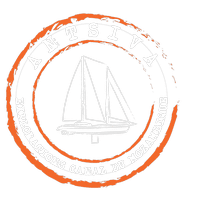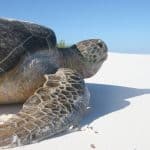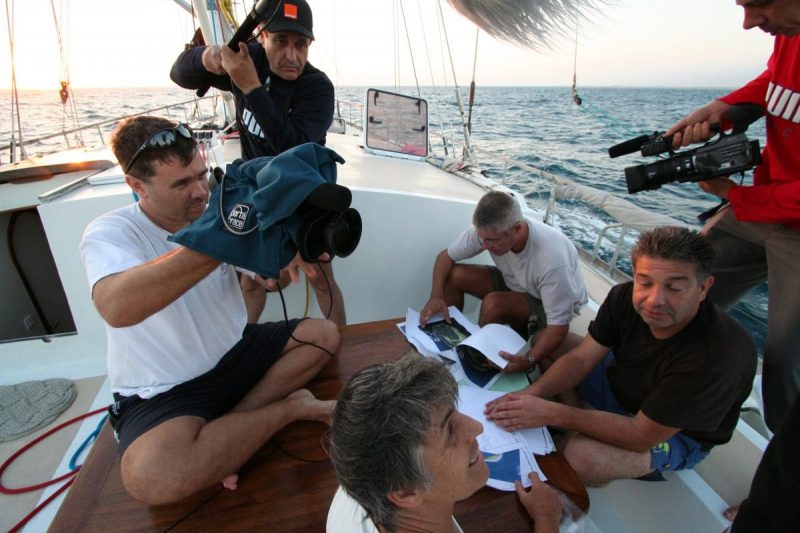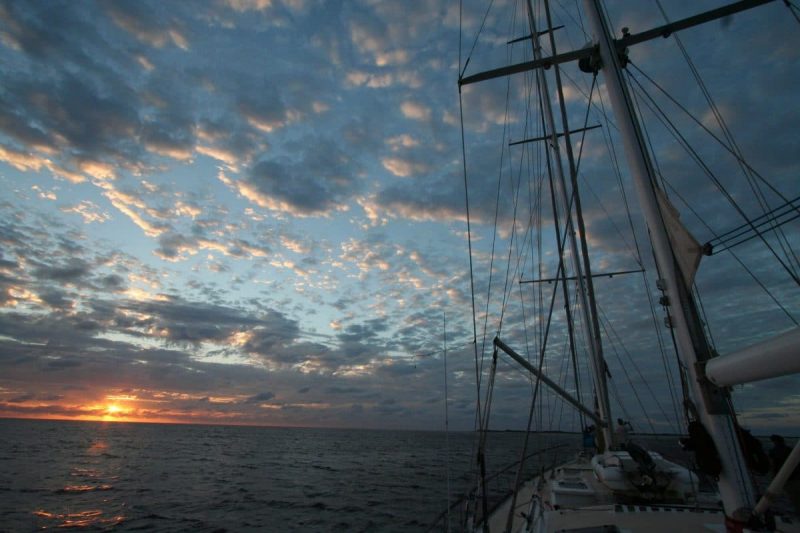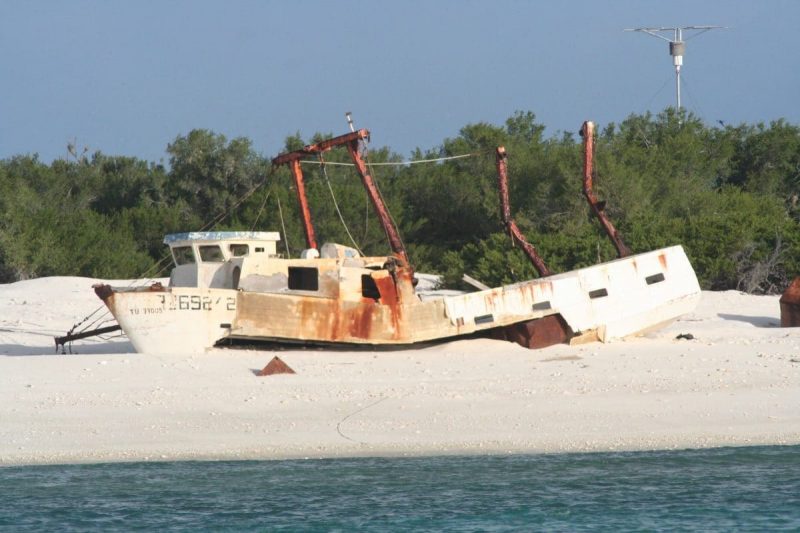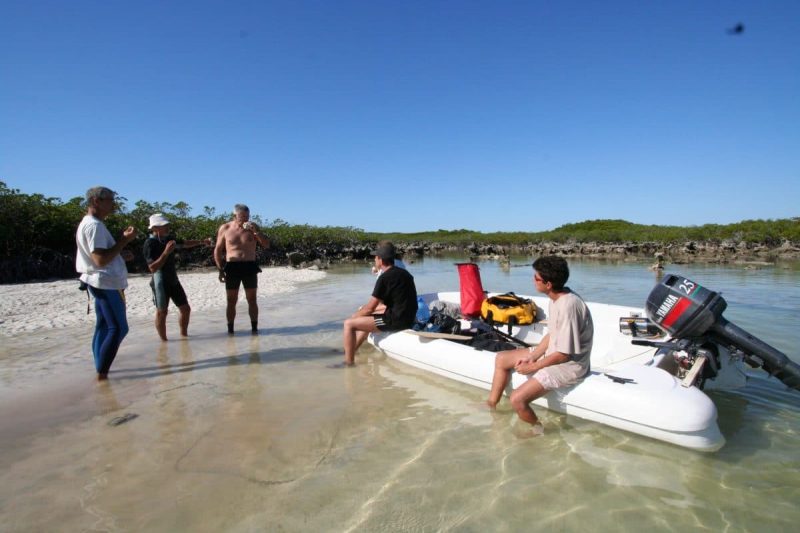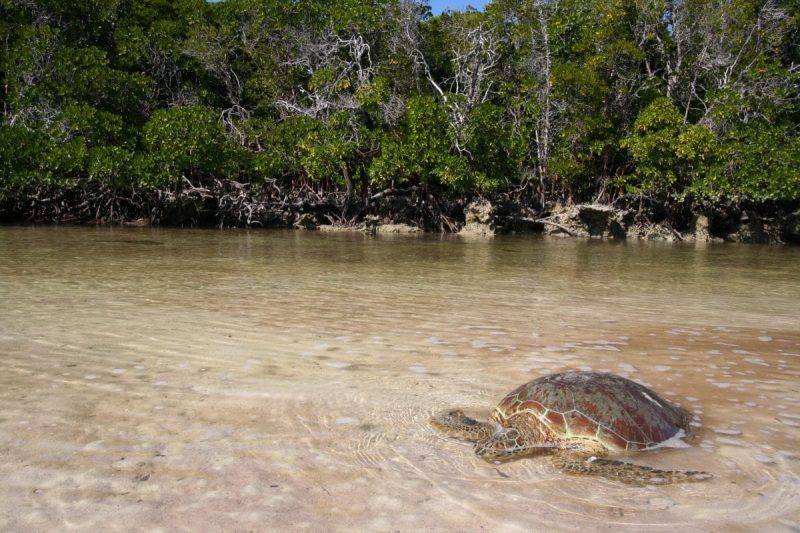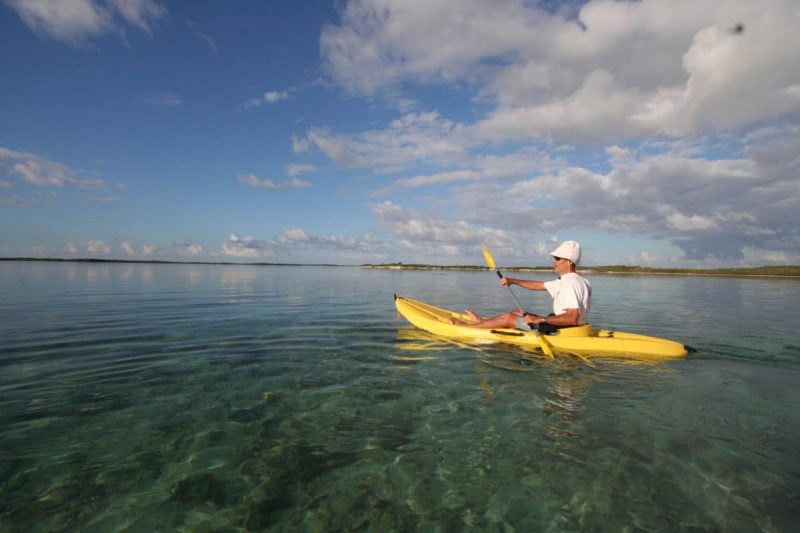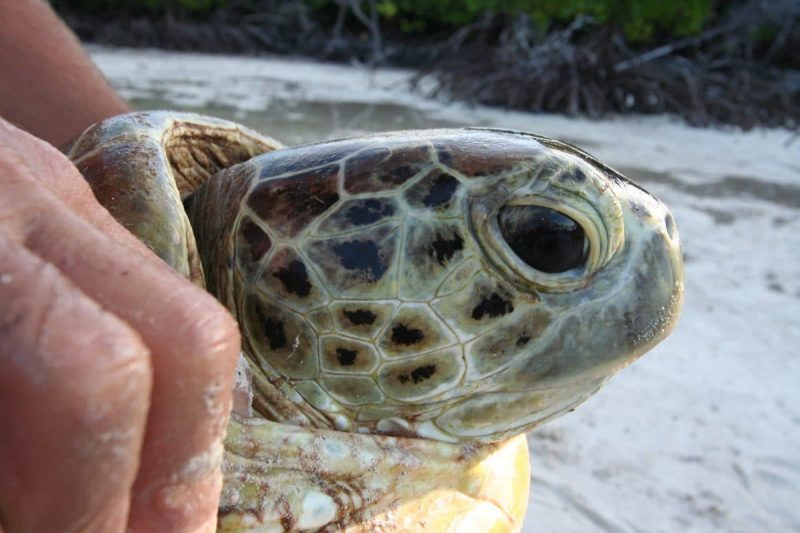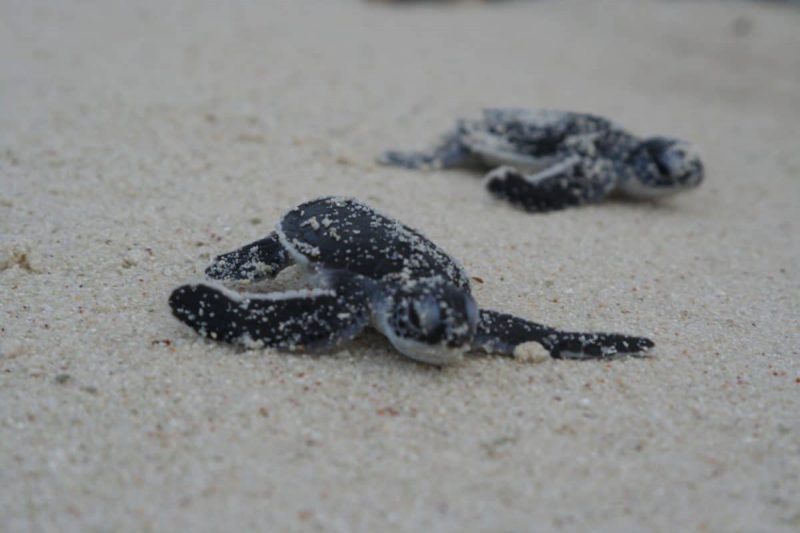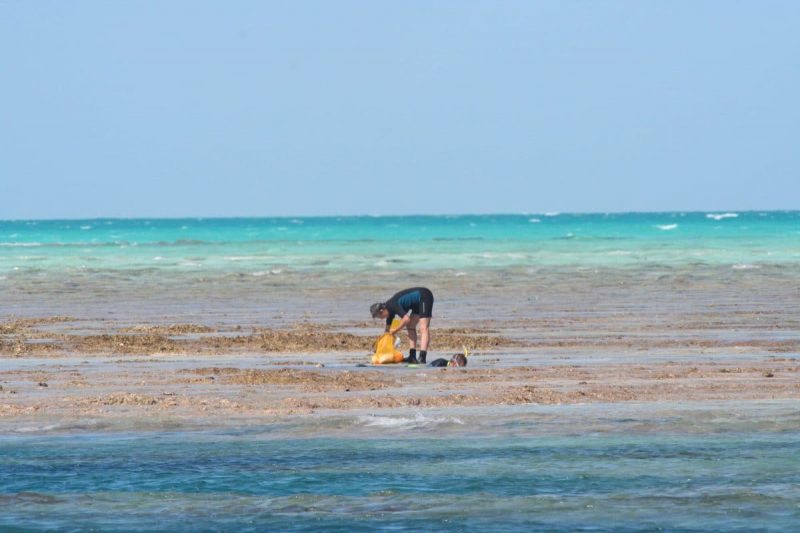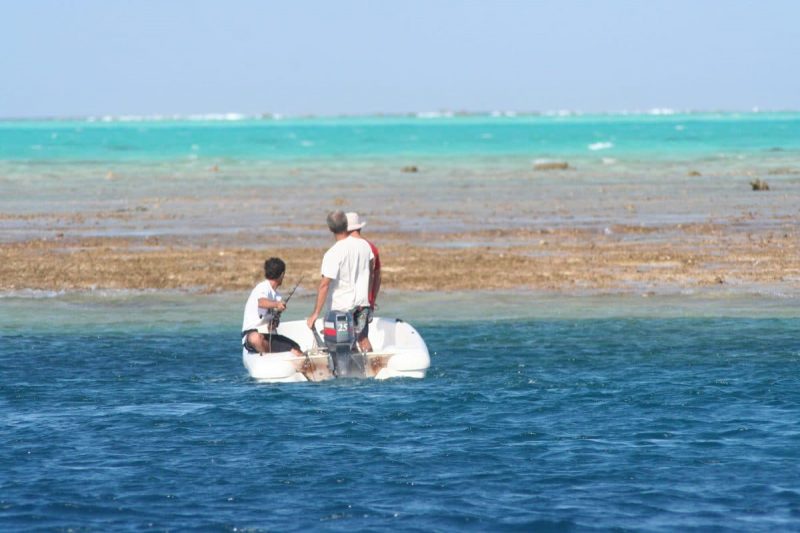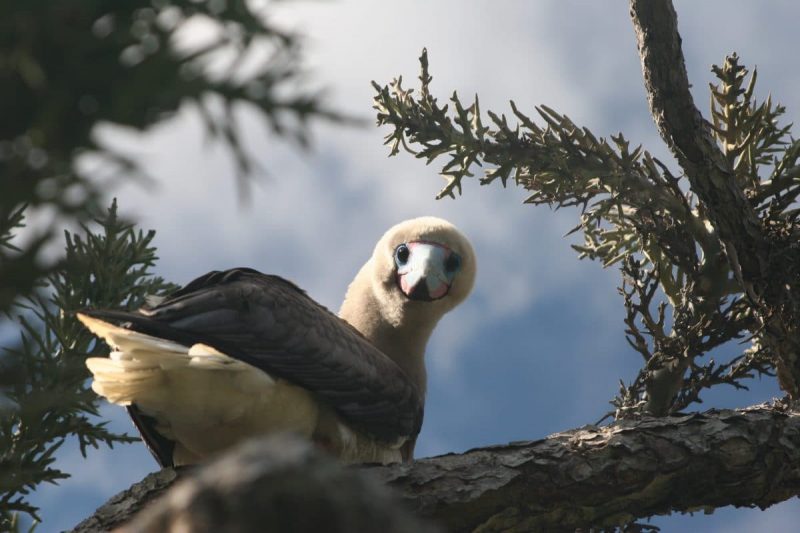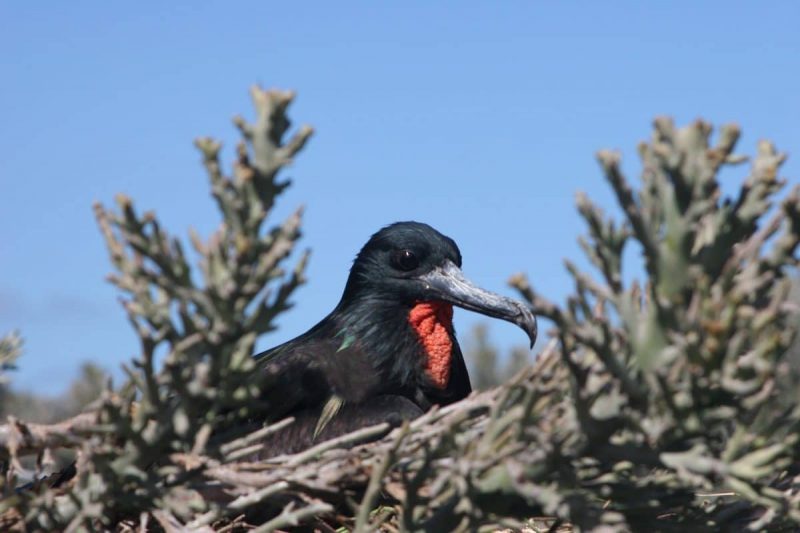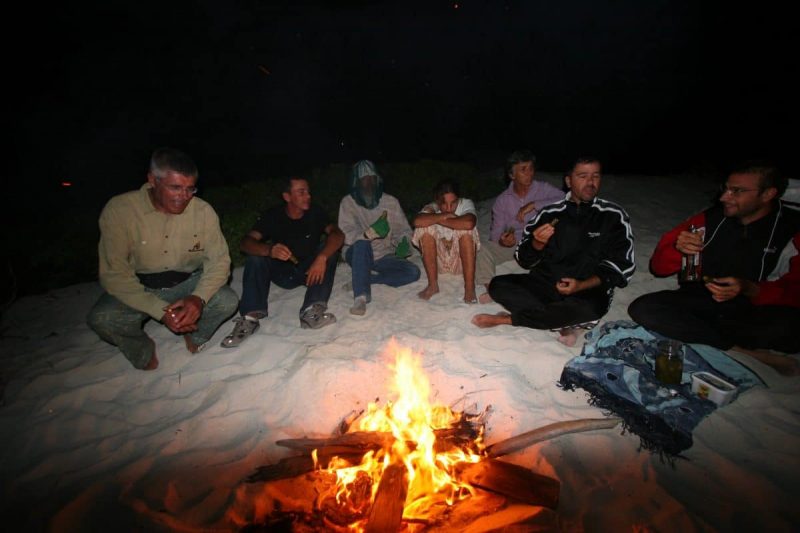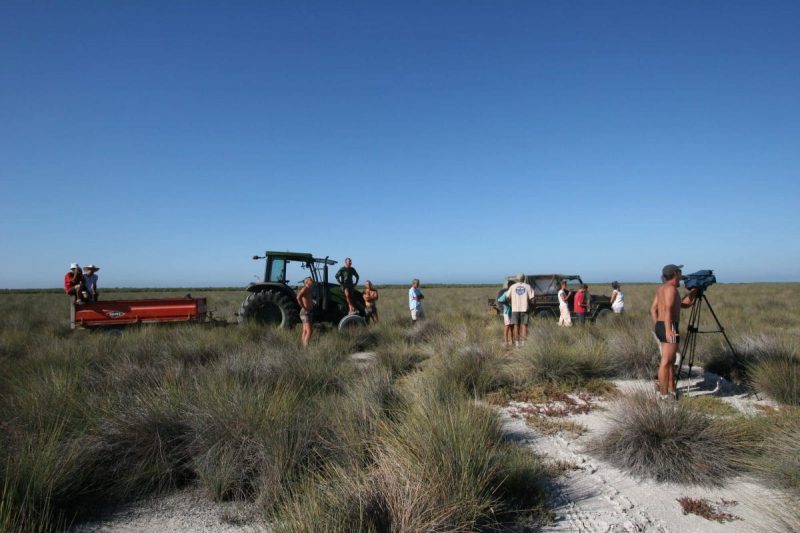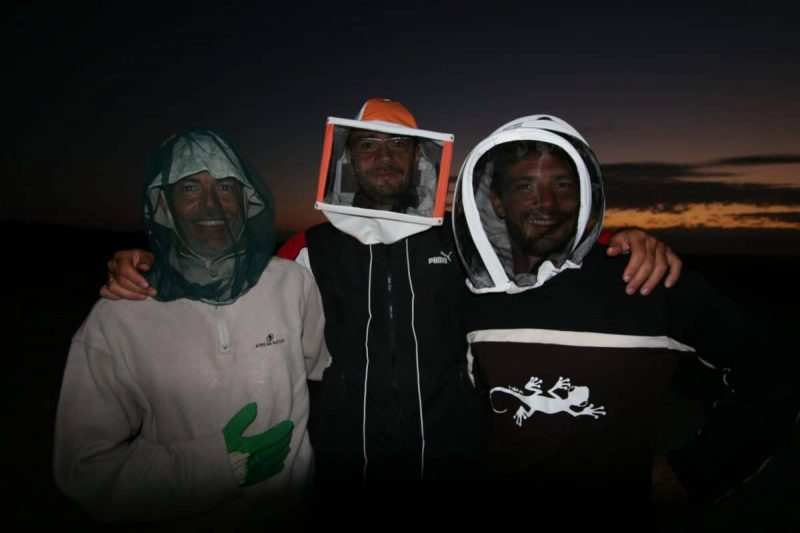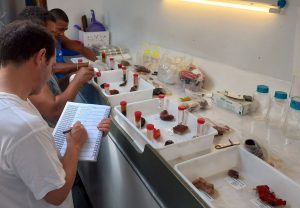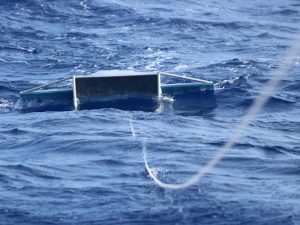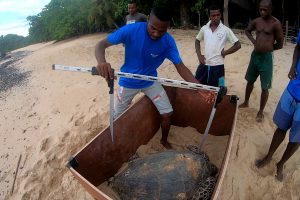May 22 in the afternoon, go to Tulear, at the end of the dock, behind a mountain of luggage. We find Jerome who introduces us to the team of 9 scientists
Hardly the administrative formalities completed, we leave Tuléar to sail. The 15 to 18 knots of crosswind by a formed sea allow us to keep a good average.
From the second day of navigation and despite the spray, the film crew gets to work. The cameras and the microphones are out and each scientist explains in this first interview the different objectives of this mission.
Antsiva traces its wake and progresses so well that it is with 10 hours in advance that we land in Europa on a moonless night. In almost total darkness, we anchor just a few meters from the reef and wait until the next morning to reach the main anchorage in front of the weather station.
We will make a first stay of 5 days in Europa during which we will see only episodically our botanist Vincent who, taken in charge by Olivier, the policeman of Eruopa, scours whole days across the island in search of new plants to list.
The group "turtle" is set up and sets the objectives: 30 green turtles will be ringed and 10 nested.
The "hydraire" group, after having installed a laboratory in the kitchen of the policeman divides his time between the research and the collection of hydrates on the flat and the work of study in the lab. Serguei has a rather amusing collection method: lying flat on his stomach, he plunges his head into the smallest puddles and water holes and comes out triumphant, a pale and tiny hydraire at the end of his fingers.
Robin, meanwhile, goes in search of "the rare bird" or joins the work of the "turtle" team.
Finally, the cameramen accompany one or the other of the groups according to their need of images.
On the island of Europa, the lagoon covers an area of some 900 hectares including 700 hectares of a magnificent mangrove.
It is therefore in this mangrove that Stéphane and Jerome will concentrate their efforts. Paddling on their canoes in the midst of mangroves, they are always ready to dive to catch one of the many turtles swimming beside them. Once captured, the turtle will be banded, measured, indexed and will be DNA sampled.
In their wanderings, our two scientists are accompanied by one or two schedules that transport the material or film crew. This one will sometimes have some difficulties to progress because of the very shallow depth of the lagoon; more than once, the appendices will remain planted and have to be pulled, pushed, carried ... while the light yellow canoes crept smoothly in a few centimeters of water!
What strikes first in the heart of this mangrove is the astonishing clarity of the water. And then, from one arm to another the landscape is not the same: the large expanses of fine sand give way to a channel dotted with coral potatoes, then it is the discovery of a clearing where emerge from unreal fossil coral sculptures. This diversity associated with the purity of the site spares magical moments of pure happiness.
During the exploration, the team will discover a resurgence, real lung inside the mangrove. Faults appear communicating with the high seas underground. At tide down, the sea is engulfed by this natural well, creating a swift furrow between the ghostly rocks of the fossil coral. It is also the concentration site for hawksbill turtles. Of the 14 rings 12 will be issued.
May 28th, departure at nightfall for the Bassas da India atoll located about sixty miles north west of Europa.
Very few studies have been done on this atoll and the objective of the mission is to make a search.
The wind has fallen, it is with the engine and pushed by the current that we slide towards the atoll. Here, little visual cue. A simple coral ring that surrounds a turquoise green lagoon.
Arrived on the site we note a very big difference between the coordinates GPS and the information of the chart marine (to obtain the coordinates to inscribe on the map, it is necessary to add to the reading GPS in Latitude (+) 2'045 and in Longitude (-) 1'160).
On Bassas da India, the crown of the reef is accore and falls directly on funds of 3000 meters, which makes it particularly difficult the search for an anchorage. Finally, we anchor at 20 meters depth, but the reef is only 40 meters from the boat! Mooring quarters are therefore necessary in anticipation of a possible reversal of the wind.
During the day, the wind rises to 25 knots and will last for our entire stay.
For cameramen, there is not much to film. Water all around, it lacks diversity!
In fact, everything happens on the coral reef and under water.
Nicki is very excited because no hydraire has ever been listed on this site. Everything is to discover!
And it is this astonishing vision that Nicki and Sergei offer us: alone in the middle of the ocean, they are looking for hydraires, bent over a piece of coral barely discovered at low tide. Water holes have caught parrot fish, and, say Tarzan, the knife between the teeth, Sergei savagely attacks them and provides us with dinner.
After a quick investigation of the lagoon, besides well agitated, the scientists do not spot any turtle and then decide to prgrammer for the next day an exploration of the falling scuba diving.
While waiting for this moment, we organize at the back of the boat a fishing trip, but it is very difficult to avoid the many sharks that constantly turn around the boat and are definitely very interested in our baits. We drop the line on the bottom and, once the fish rail is the race against sharks that often end up stealing our catch and are themselves caught on the hook. Impossible to gaff our shark as his skin is hard (our protector will pay the price!) And it is Tombo who will go on board by taking him to the lasso. It will be cooked the same day and for most of the crew, it will be a first.
The next morning, Stéphane, Jerome, Robin and Nico leave for a scuba dive that will remain engraved in the annals.
In 20 meters of water, at the edge of the drop, they observe many fish that stand out by the gigantism of their size, especially trevallies and groupers of all kinds, including a potato grouper weighing more than 100 kg that will follow. all the progress of the divers. They capture the attention of a band of 8 white tip sharks as well as a gray shark. They also encounter many huge parrots and humphead wrasse and a myriad of reef fish. A real festival which they all leave dazzled and amazed!
Already two days spent at Bassas da India and it is necessary to think to return to finish the planned program on Europa. No luck, the wind established around 25 knots arrives right in front and we will have to tack for 24 hours in a sea formed to return to our point of departure.
After the last shots in the mangrove, the whole team goes by tractor to the south of the island where a bivouac is planned on the beach. (watch out for mosquito attacks at dusk)
This is the big date with the terns. Every year, at that time, a million pairs, or some two million people come to breed on this little piece of land in the middle of the Indian Ocean. It all begins with the amorous parade where couples form in flight and continue their incessant circle in the sky for several weeks. Then, each couple will land on the ground for laying, thus investing each tuft of grass. But for the moment, the love parade is in full swing. The sky is blackened with "kilometers" of terns and the continual cries of the birds are deafening. In the middle of these clouds of birds, we already note the formation of couples: these have the particularity of flying always to two. We stop to observe them, but some do not seem to appreciate our presence and fly lower and lower, emitting significant cries. It is both terribly impressive and magical. !
There, the team also discovered the "turtle cemetery": it is a large sand dune on which many turtles have been trapped. Exhausted by spawning, the turtles fail to climb the dune and die of desiccation before having reached the sea.
The south beach is open to the prevailing winds and collects naturally many debris. Two wrecks of trawlers seem to be the reminder of the fragility of human constructions in the face of the ferocity of the elements. The evening will be spent around the camp fire and the Vodka brought from Russia by Sergei will be well appreciated.
The next morning, the return will be on foot along the West Beach. During this time aboard Antsiva, five wahu will be fished (including one of 1.50 meters) to supply the military detachment whose stay has just been extended on the island.
After lunch, the 14 soldiers who welcomed the team and facilitated the many trips to the island with great kindness in turn ride aboard Antsiva.
They will try to break the fishing record of the largest shark (record held by the previous team with a shark of 2.65m). A first shark will bite the hook without a shoe. Too bad, it was a particularly impressive hammerhead shark! And it is a few minutes before their departure that we go back a grouper over 40 kg, a beautiful piece that our military cook on shore that evening.
We are already on the evening of June 3rd, and it is time for Antsiva and the mission to weigh anchor. A windy and rainy navigation will be our lot until Tulear. On board, however, life is organized between rest (a little forced) for some and tarots parts noisy and fierce for others.
We reach the port of Tulear June 5 in the morning and some are not unhappy to find the floor of the cows!
The crew of Antsiva would like to say a big thank you to the whole team who knew, by his kindness, his gaiety and his patience, to involve the neophytes that we are in their adventures. Everyone in his field has been able to share his passion and it is rich in this new knowledge and the head full of birds, turtles, hydraires and plants that we will continue our journey.
Jerome, Sthpane, Robin, Nicki, Serguei, Vincent, Serge, Thierry and Manu. Thank you.
